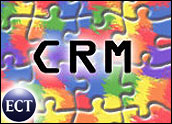
The outsourcing and offshoring of business tasks rarely fails to generate controversy, with horror stories of company veterans training their overseas replacements and major projects that were farmed out only to flame out.
However, if done properly, outsourcing — whether in another state or in another country — can save organizations tremendous amounts of resources and allow them to focus squarely on their core business strategies.
Experts on the subject weighed in for CRM Buyer on the right projects and times to outsource, how to choose where the work will go, and transitioning smoothly to achieve the desired effect, which goes beyond cost savings to include the ability to reach globally and excel where a company might normally stumble if unable to outsource. The basic message was, “Do your homework” in order to ensure both sides know what is expected and how it will be measured.
Global Workers for Global Market
John Challenger, chief executive officer of outplacement firm Challenger, Gray & Christmas, said the main impetus for outsourcing, aside from cost savings, is the longer-term desire to grow beyond the local market to other parts of the region, state, country or world.
“Companies are going into overseas markets and they need to be there in many ways to prove to those countries that they’re there to stay,” Challenger said. “Global companies have to have a global work force.”
Challenger, who stressed that cost-savings is more of a short-term motivator for outsourcing, likened the process to consumers shopping at Wal-Mart.
“It’s driven on a macro basis by the globalization of the economy and the work force,” he said. “People or companies make decisions based on what works best for them. Once you take out the proximity-to-market issue, it’s about where do you find the best talent base at the best price. You can get higher talent at a higher price, or slightly less talent at a lower price. What’s happened now is, you can get more talented workers at a low price. It becomes a no-brainer. That’s why everyone goes to Wal-Mart.”
That might mean India, China, New Jersey or North Dakota, depending on the actual talent an organization is seeking. Challenger said although there is a larger cultural element involved when work goes abroad, the process of picking where to outsource from is the same whether for domestic or overseas partners.
“It’s no different than what you’re doing when you’re outsourcing work or moving it to other operations around the world, whether it’s from Chicago to San Jose or North Carolina to Bangalore,” he said. “You basically need to hire people from your core operations who understand and have built it, and go and have them develop it wherever you’re going. You need people locally who know the local market, different laws and culture, and you need a period of transition.”
Special Support, Setting the Bar
Yankee Group analyst Andy Efstathiou said the main reason for outsourcing, aside from cost-benefit, is to access technologies or capabilities that the company would not otherwise have.
Examples included staff for some applications that require special skills or training, or to support a “side technology” that is a small percentage of an organization’s IT but nevertheless needs sufficient support, Efstathiou said.
The analyst said another big reason, and a good reason, for outsourcing is a technology migration.
“You have your current state and where you want to be in three years and you put the responsibility on the outsourced resource for the project and its implementation.”
Although he referred to the benefits of outsourcing, Efstathiou had some cautionary points for organizations looking to the outside for help. He said there are two instances where outsourcing does not work, indicating that if demands are overly aggressive and outsourcing vendors make promises that can’t be kept, the results are negative.
“That’s usually what leads to the blow-ups you see in the press,” Efstathiou said, referring to the high-profile outsourcing troubles of the U.S. Navy and vendor EDS.
Efstathiou said outsourcing arrangements may also under perform in the long term if organizations are not seeking improvement or change, but are instead focused on “the same for less.”
“That’s the most frequent case of not very much benefit for customers,” he said. “There really needs to be an agenda for change and improvement. That’s when outsourcing arrangements really perform well.”
Efstathiou agreed that although the emphasis is different, choosing a domestic or international outsourcing supplier comes down in both cases to honestly and fairly assessing the current state and future desired state.
“Companies have been improving, but they tend to underestimate the amount of management or increase in amount of management required to run things from a distance,” he warned.
Efstathiou said the following steps were crucial in dealing with an outsourcing transition:
- Clear and accurate assessment of the current and desired situation that both outsourcer and client can agree on;
- Identification of a roadmap;
- Senior points of contact from both sides.
“That means two different people with the people skills and managerial skills to get the two organizations to work together,” Efstathiou said.
People, Process and Planning
Gartner research vice president Lorrie Scardino said while cost-savings remains the top reason companies outsource, many organizations turn to it for business, technology and process functions that are not core to their strategy.
“There’s a drive to get away from the functions, decisions and everything not related to their core strategic mission and business,” she said.
Scardino also said in the face of ever more complex IT systems and standards, organizations are turning to outsourcing to offset chaotic, ad-hoc situations.
“They view the opportunity to outsource as a way to enforce some consistency and standardization,” she said, adding that there is money to be saved by introducing “generalization and mass customization.”
The analyst said companies must avoid the flawed approach of making a decision to outsource and leaving it to a company division or executive.
“You need proper due diligence,” she said. “You have to look at the cost of the IT and the investment you’ll need to make, the resources, and align them with your business goals. The business requirements must be positioned from the people, process, and technology standpoint to make that happen.”
Perhaps the most important aspect of carrying out a successful outsourcing arrangement, according to Scardino, is laying out the starting point.
“You must baseline the cost of service and service levels,” she said. “No matter what it is, you’ll do better, the same, or scale back, but you need that baseline. It’s absolutely essential, and a lot of companies forget that.”
Furthermore, Scardino advised that both sides of the outsourcing deal must agree to the baseline to avoid a rough relationship.
“Do your due diligence before signing a contract to make sure the baseline assumptions you’ve made are correct.”
Scardino said the successful outsourcing transition consisted of:
- Extensive planning;
- A communication plan that informs employees, vendors, providers and others involved;
- Consideration of technology, documentation, physical assets and licenses;
- Dependable people from both sides.
Transition Time
“You basically have to have a go-to person on either side so issues can be resolved and adjudicated quickly,” Scardino said. “You must also allow enough time for the transition. Don’t try to cut it short to save money or to stick to some artificial timeline.
“When operating, you should stay in a steady state for a period before introducing projects to get the kinks worked out. Then you start projects and you have a phased and orderly approach. Then it can indeed be quite successful.”















































